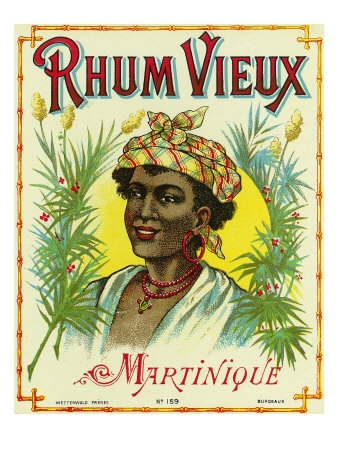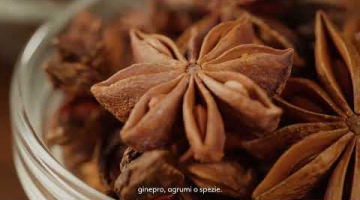Disponible en Francais: Cliquez Ici
Just as you’re never more than 12 kilometres from the sea on this island, you’re also never far very away from a distillery. It’s not often that the landscape, people, culture and tradition of a country are in such harmony with a product, but rum in Martinique is more than an export—it’s a lifestyle!
A Bit of History
In 1694, Jean-Baptiste Labat, a priest and Martinican historical figure, invented the alembic. Facing the collapse of sugar in the world market, the idea of distilling fermented sugar cane juice came along to make use of the excess. In contrast to industrial rum made from molasses, which makes up 90% of the world’s rum production, Martinican rum is produced using pure sugar cane juice. Molasses, colloquially called sirop de batterie (battery syrup) in Martinique, is the waste product of this process.
Habitation Clément in Le Francois, Martinique
The rum here is AOC—appellation d’origine controllée—and like French wine and cheese it is regionally protected and held to certain standards. “Rhum agricole” or agricultural rum has three types: white rum, which must be kept in stainless steel containers; aged rum which is aged for at least 3 years in oak barrels; and rum ambré or paille, which spend a maximum of 2 years in an oak cask.
From February to June, it’s the rum-making season and you can visit the distilleries and see them in action. At the very least, you’ll smell it while driving.
Zépol Karé
Neisson Distillery
This distillery is found in Le Carbet and boasts the best white rum on the island. I visited last year just before going home and picked up a bottle of white 52.5° which had won an award the year before. The rum is also known as zepol karé (square shoulders, in Creole) for the shape of the Neisson bottle. You can walk around without paying and the gift shop has interesting items, though nothing particularly unique. The grounds are nice and open, but there isn’t very much to see. The woman smiled and chatted as she made us a Ti Punch and she didn’t make me feel bad for wanting a dégustation before I’d considered buying anything.
Plantation de la Montagne Pelée, Depaz Estate
Depaz Distillery
Lying at the base of Mont Pelée with a lovely view of the Caribbean Sea is Depaz Distillery in Saint-Pierre. Though their rum isn’t as internationally renowned as others, many of those reputations are owed to the Depaz estate (and of course, good marketing). Depaz, due to their rich soil and access to pure water, supplies many distilleries with their cane and also does the fermenting and distilling for others. The estate also makes an interesting visit because it’s one of the few distilleries you can explore during production.
We saw the sugar cane juice being pressed and being transferred over to the columns where they ferment. They also have a museum with the oldest steam machine on the island. The estate is well-kept and there is a “castle” as well. It is private property but you can also visit old rooms and houses turned into museums and bars. There is a restaurant that serves lunch. The gift shop has interesting items though when we went the staff had disappeared and so we gave up on our dégustation.
Musée du Rhum, Upstairs in the Saint-James Rum Museum
Saint-James Distillery
With a rum museum, house of distillation exhibit and rum sampling all at no charge, this distillery is definitely worth the visit. Right in the centre of Sainte-Marie, you can learn about the history of this distillery that was originally in Saint-Pierre before the eruption of Mont Pelée.
People are often confused by the English name of the rum—it is said that the rum was so named so it could be more easily sold to the colonists of New England. The island was also under English occupation during its creation. This is the origin of the trademarked square bottles: they facilitated shipment to England.
Their most popular rum selection
Taken over by Cointreau and moved onto an old factory of the Despointes Béké family, the old photos, posters and documents make it an interesting place to check out, even if just for the historical aspect. The exhibit behind the museum features the history of distilling and holds really old rum—including bottles from even before the eruption in 1902 that go for around £1200 online. There is a guided visit during harvest, and you can also take a train around the plantation for an extra fee.
Saint-James is home to a restaurant many have recommended to me but I’ve yet to eat at and it hosts the Fête du Rhum in November—a free festival celebrating rum with food, drinks, and a concert in the evening! Oh yes, and the rum is great—probably one of the more well-known internationally.
Fonds Préville, Rhum J.M Distillery
J.M. Distillery
“It smells like poop.”
Yes, that is what I said as we drove up to this distillery in Macouba, the second-last town in the north, just before you fall off the island. The fermenting and burning process (distilleries are often self-sufficient, burning the left over sugar cane to fuel the machines and using running water and sources nearby) of rum production often smells …interesting. But this place smelled horrible.
Regardless, when you ask the locals who makes the best rum on the island, they will most likely answer Rhum J.M. Aged in cognac barrels, J.M.’s aging secrets and quality water from Mont Pelée makes the rum luxurious. The dégustation room was modern and chic, so we sat on a bar stool and tasted an ambré, a 3-year old rum and 15-year old rum. They were all quite flavourful and personally I found them smoother than other rums I’ve had. In the end, I made off with a 1-year old ambré to take home with me.
There wasn’t any visiting to do during production, though the smell would have deterred me anyways. I did learn that you can take a 4×4 visit around the plantation during the off-season, however.
Young and old…together
Clément Estate
Habitation Clément in Francois, a 160 hectare agricultural property is host to a rum factory, a botanical garden, and contemporary art galleries. You can walk around the old distillery, go to the house dedicated to the George H.W. Bush’s visit to Martinique and explore the garden, which is home to 300 different plant species and palm trees.
This is the only one where you have to pay to visit. We took the audio tour and walked around the botanical garden. Well-maintained and wonderfully peaceful, it made for a pleasant afternoon out. We also checked out the art galleries, which are always promoting artists and hosting expositions. Rum doesn’t really seem to be main purpose of visiting the estate though the ownership by the Hayot group (Béké family) means there is plenty of photos of unique primary documents maintained throughout the island’s colonial history.
***
There are two drinks that important use this excellent island rum: Ti Punch and Planteur.
Ti Punch and a Bois Lélé
Ti Punch
Get ready for décollage (take-off, the nickname for your first punch of the day) – it’s gonna be a rough one, folks.
Steps
- Place a teaspoon or two of raw cane sugar (or syrup) in a glass.
- Squeeze the juice from small piece of lime and allow them to mix together. You may add a drop of water to facilitate this.
- Pour in two fingers of white rum and drop the rest of the lime in.
- Stir with your bois-lélé (swizzle stick) if you have one.
Congrats, you’re now drinking Martinique’s national drink, known as le ‘ti punch. As I learned from Tom, “punch” comes from the Sanskrit pañca meaning “five, five kinds of” because the drink had five ingredients. Ti punch (ti means small) only has three of five ingredients.
Planteur
This more of your traditional idea of punch. Mix in a bowl:
- 2 parts aged rum
- 4 parts cocktail juice (usually guava, pineapple, and orange)
- A drop of sugar cane syrup
- A sprinkle of cinnamon, nutmeg and vanilla
Shake and serve cold!
THANKS TO ORIGINAL POST:http://alyssawrites.com/all-roads-lead-to-rum/
















